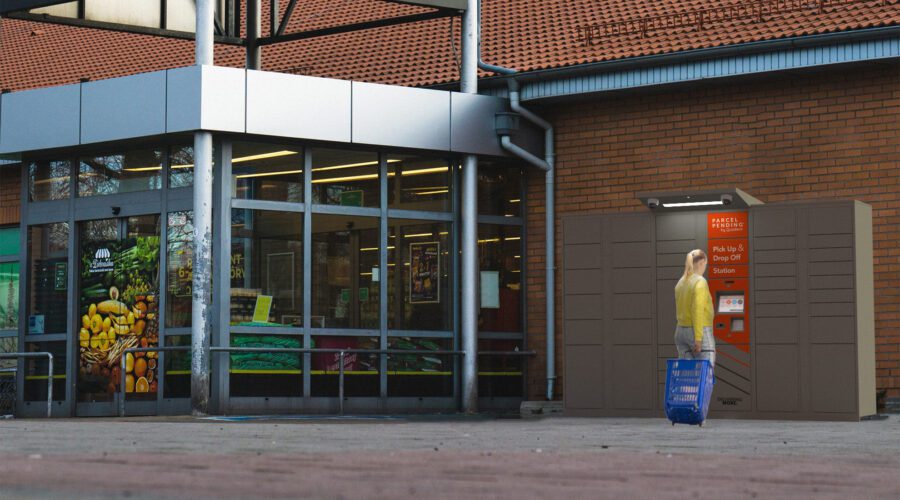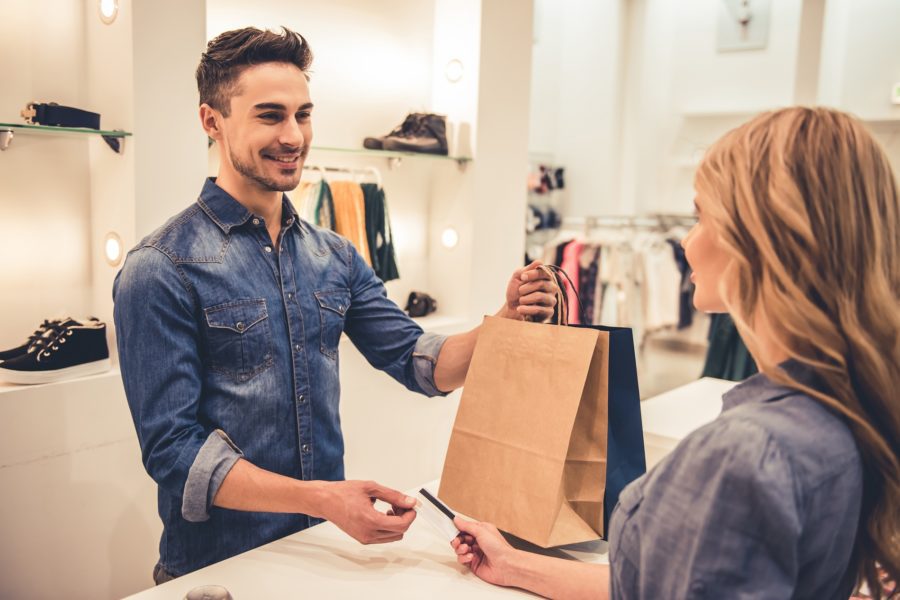Retail
Omnichannel Retail and The Future of Commerce: Is Your Company Prepared?
Written by: Parcel Pending
9 Min Read
Published: July 19, 2019
Updated: March 29, 2023
Businesses are in a constant state of change. They have to adapt to the current market, the economy, and new laws. Customers’ expectations change with time, and of course, so does technology. That’s why so many businesses jumped online as soon as there was access to the internet. And why companies created social media pages to better promote their businesses.
This adaptation doesn’t always happen instantly. Sometimes it takes years for businesses to catch on to the newest trends and to get it right. Omnichannel retailing is that current trend. Companies are trying to streamline their services online and offline and make the distinction between the two nonexistent.
The Philosophy Behind Omnichannel Retail
Omnichannel retail is all about providing customers the ability to patronize a business whenever and wherever in a seamless experience. That could be purchasing products online when in the store, shipping products between stores with their phone, and delivering packages to a safe and secure location while relaxing at the beach. Basically, anything that can be done at a brick and mortar store can be done anywhere and just as easily.
In today’s world, omnichannel retail trends toward freedom of choice and provides a seamless experience. Many people believe this contradicts traditional in-person stores. But that’s not true at all. Stores are changing, yes. They’re becoming more streamlined with the online shopping experience. But are they becoming obsolete? Absolutely not.
The Rise and Importance of Omnichannel
In order to understand how an omnichannel strategy can dramatically improve your business, it helps to have a little context. The why often supports the how.
The term came well after the idea already existed. Essentially, the idea of an omnichannel retail strategy idea grew out of all the different avenues available to companies. These include:
- Computers, the internet, and websites
- Cellphones and mobile internet service
- Rise of eCommerce platforms
- Rise of Social Media
Technology’s Effect on Businesses
Starting around the mid-1990s, businesses figured out that there was a brand-new way for people to find their business. The internet! The list of companies jumping on this new trend was exhaustive, and the effects it had on the market are well documented. In 2000, the dot-com bubble popped and the stock market collapsed. Many online businesses lost the ability to stay running, and a few contenders like Amazon and eBay survived, recovered, and then thrived.
Companies who understood just how powerful these online sites would become grew; those who didn’t fall behind. Although, nobody could foresee just how game-changing and ubiquitous something like the smartphone would be.
Now, companies are caught dead without an online presence. Only a select few small businesses don’t plan on having a website at all. And that tiny 8% is shrinking each year.
Rise of eCommerce Marketplaces
Companies now have so many places to advertise their business that it’s hard to keep up. However, within these options lies one key feature of the omnichannel retail trend. The more places a customer can find your business, the better.
You’ve probably heard of the more global e-marketplaces: Ali Baba, Amazon, Etsy, eBay. These sites don’t necessarily sell their own products (some do). Instead, they create an easy-to-use platform for customers to browse through their favorite brands.
They’re essentially an online shopping mall. And they’re beneficial in many ways.
- Brand recognition – Seeing your brand everywhere, on Amazon, Etsy, social media, etc., will help solidify brand awareness with customers. Seeing is believing, or in this case, seeing is recognizing.
- New customers – Some people do all their shopping on Etsy. Some on Amazon. There are no two customers exactly alike, and it’s important to be able to target different groups of potential customers.
- Outpace competition – An example: Think of two competing restaurants in the same area who have similar reviews on Yelp. One promotes on five different delivery platforms, the other only delivers through their website. Which one has a better chance of growing? Answer: the one who can capture their audience’s attention by utilizing an omnichannel strategy.
- Brand Legitimacy – These days it’s not uncommon for new companies to start with just a website and a social media page to attract business. The reason being is it takes time and effort to do all the outreach steps necessary to be on all eCommerce platforms. Brands that are on multiple sites show that they are big enough and streamlined enough to be expanding. It provides legitimacy to the brand.
How to Implement Omnichannel Retailing
Now that you have a good understanding as to what omnichannel retail is and how it came about, the next step is to implement all these ideas. To do this, businesses have to:
- Use each channel properly
- Streamline the experience
- Listen to the consumer
Using Each Channel Properly
This is a big, big, big portion of omnichannel retailing that many companies don’t get right. To use the many channels available, you must first learn what each channel is and why it’s used. This isn’t something challenging, per se, but it is time-consuming. However, for companies looking to expand, it’s worth the time to explore each channel.
Brick and Mortar Stores
What have in-person stores been traditionally used for? It’s not a trick question. Shopping, of course! Before online stores, there was no other way to get the products you wanted. That meant stores needed:
- A large backstock of items
- Universal products that fit wide groups of people
- Knowledgeable employees who knew the ins and outs of available products
- Constant communication between adjacent stores for inventory
The physical space available to stores limits the amount of inventory a store can offer. With the necessity for a large amount of backstock, there goes a sizeable portion of your store. This is why store aisles can feel so crowded.
But imagine now, a world in which a store doesn’t need extra inventory. A store can offer a comparable selection to its online inventory. With new omnichannel retail trends, brick and mortar stores can be so much more.
- Increased Variety – A retail store can be used to show off a much wider selection of items available. Instead of having customers leave with the products, they can purchase them in store and have them quickly delivered to their address or to a neighborhood electronic locker system.
- More Space – With no more need for a large backstock or having multiples of one item on display, stores can breathe and allow for a more relaxed customer experience. This inviting setting will entice customers.
- No more inventory problems – When all excess products can be stored in another location, say goodbye to inventory problems. “Sold Out” can be taken out of the retailer’s lexicon, replacing it with “Ready to be Shipped.” (Unless it really is sold out!)
Combining all of these into a single strategy can produce dramatic improvements to the overall customer experience. The key takeaway is that physical stores are not about competing with online stores. It’s about utilizing both online and offline options to create an intuitive, seamless experience.
Social Media
Increasingly, social media platforms are acting as some combination of both sales and marketing. With social media you can do a number of things:
- Communicate your brand
- Engage with your audience
- Show off new products or lines
- Get feedback
- Capitalize on trends and fads
- Sell individual products
- Link to relevant services within the company
Each social media platform is its own channel. What you post on Facebook won’t necessarily work on Instagram or Pinterest. That’s why it’s important to invest the time to understand each one.
The Major Three
For most businesses, covering the big three: Facebook, Twitter, and Instagram constitute their entire social media coverage. The benefit is you’re going to target the vast majority using these three platforms.
- Instagram – Instagram is all about pictures and short videos. Instagram allows you to bring a certain visual representation to your business. Perhaps you pride yourself on environmentalism or you’re a chic minimalist brand. Show this using pictures. Get clever with captions and hashtags to add an extra layer of flavor to your brand.
- Twitter – Where Instagram is all about the visual, Twitter is all about language. Words, words, words. Use Twitter in clever, ironic, or casual tones to bring your message down to earth. Because of its low character limit, you can say a lot with little effort.
- Facebook – The “in-between” social media platform, Facebook is perfect for both words and images to find a healthy balance. Facebook is great for companies who want to use targeted ads to bring in more business.
The downside of only using these three is you miss out on incredibly valuable groups of customers on other social media sites.
Other Social Media Platforms to Consider
Which platform is right for your business? That depends mostly on your target customer base. Each platform caters toward a specific demographic, and you can use that to your advantage.
- YouTube – One of the most heavily underutilized social media platforms by businesses is YouTube. It has the top usage rate of any social media and is a great way to share information about your business informally.
- Pinterest – The demographic skews toward younger female users, and it’s used primarily for looking at products to purchase. Is this the only demographic and use? Of course not. But if this is your target customer, Pinterest might be more valuable than any of the Big 3 social media.
- Snapchat – Snapchat is a younger generational tool that can help businesses market to future consumers.
- Quora – Quora is a question-and-answer platform that some businesses use to great advantage. By answering a few questions in your field each day, you can garner millions of answer views per year. These are all people looking toward your business as a solution.
- Other Platforms – Medium, Reddit, LinkedIn, Messenger Apps, and even Dating Apps (used for advertising) are all available for your business to spread your message.
The Streamlined Omnichannel Experience
Now that you have all your proper channels in place. You have your physical stores connected with your online stores. You are on multiple eCommerce sites and marketplaces allowing for customers to find you anywhere. And your social media platforms are up-to-date and individually designed to succeed.
The final step is to streamline your business across all of these simultaneously. This takes coordination and communication. But that’s the heart of omnichannel retailing. It’s all about creating a smooth experience from online to in-store.
Customer Experience
Put yourself in the shoes of the typical customer. Imagine someone on their phone looking at social media on their lunch break. They see something they want, and that social media page directs them to the online page where they can buy it. They decide they need to check it out in person before making the final purchase. So that’s what they do. But when they get there, they don’t want to buy it right now, because they have other errands to run. Instead, they purchase it online and have it shipped to their address.
Seems reasonable, no? This is the future of retail.
This covers the different pain points a retail customer will often feel and the means with which they expect to solve that problem. What you as a business can do is make sure that you’re on the same wavelength.
- Marketing and Sales Consistency – When something is advertised on any of the communication channels, ensure that it is on brand and promoted across all sites.
- In-store and online shopping – Customers will often buy items online even when they’re in a brick and mortar store. This should be encouraged and made as easy as possible for the consumer.
- Delivery – Make sure that there are safe and efficient delivery options. As more customers are having products delivered, the necessity for smart retail lockers with secure pick-up locations or other click and collect services are increasing. Parcel Pending lockers, for example, allow customers to get notifications when packages arrive, and they can pick-up on their own schedule.
Conclusion
Omnichannel retail has been a heavy focus for businesses who are looking to one-up the competition. By taking a multi-channel retail business and streamlining it across all platforms, customers will have a dramatically improved experience. For businesses, the biggest step is getting all the channels set up and firing properly. Once everything is in place, however, it’s all a matter of communication and coordination.
Businesses love being everywhere for customers to see them and consumers love the ease with which omnichannel retail provides. That’s called mutual harmony.
Sources:
Pew. Social Media Use in 2018. https://www.pewinternet.org/2018/03/01/social-media-use-in-2018/
Clutch. Small Business Websites in 2017: Survey. https://clutch.co/web-designers/resources/small-business-2017-website-survey



